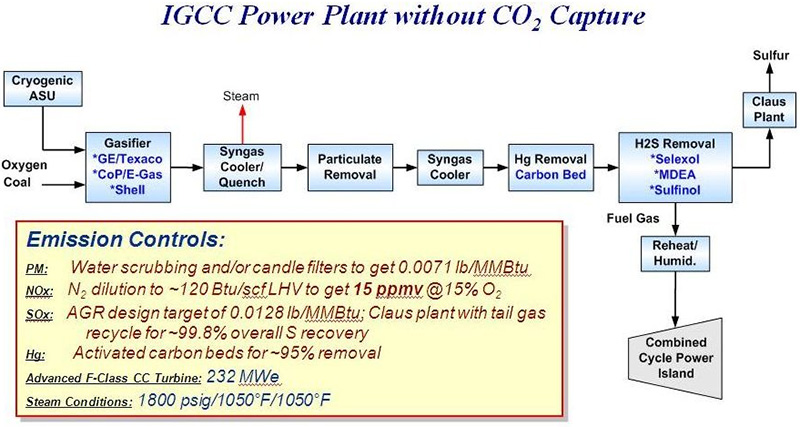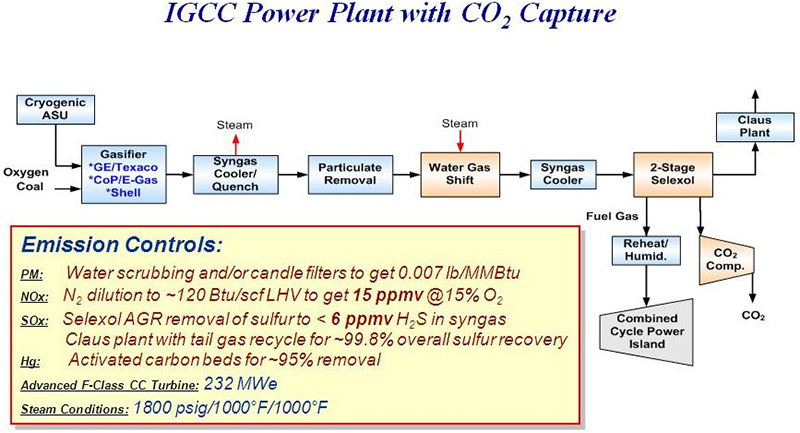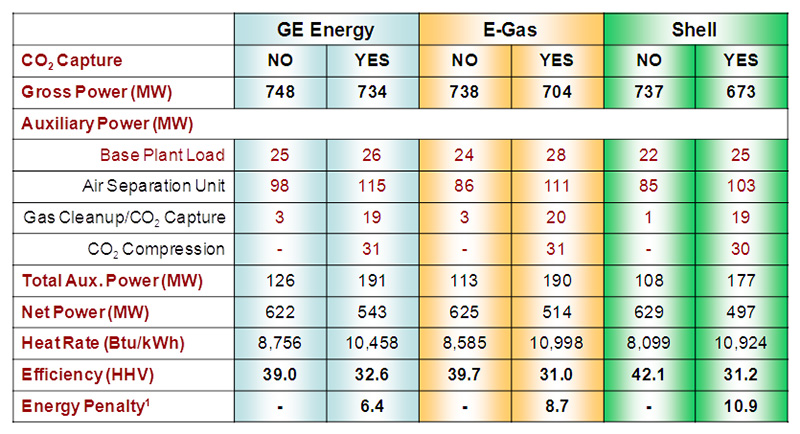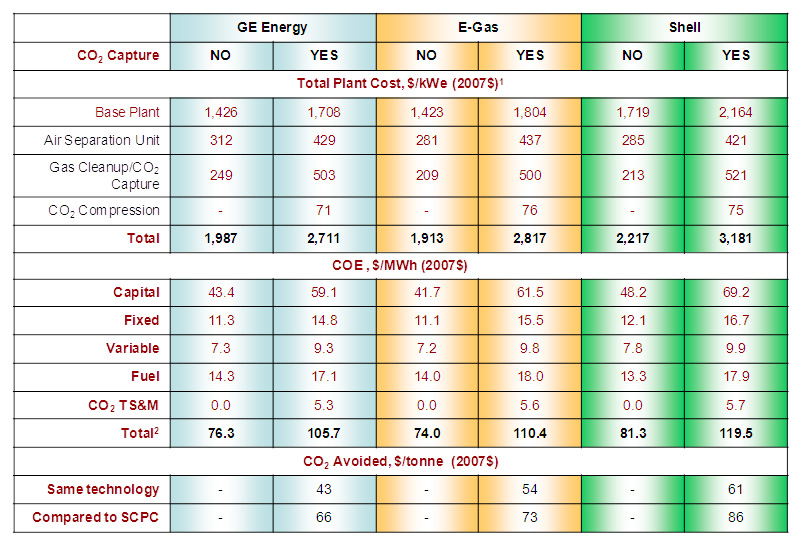IGCC Efficiency / Performance | Coal Gasification Encyclopedia
by Rudy P. SysAdmin at howtofindthemoneyConsideration of efficiency and relative performance of current technology-based integrated gasification combined cycles (IGCC) has been made by NETL in ongoing studies.1 These include IGCC power plants based upon a few major gasification technologies, as depicted in Figure 1.

Figure 1. IGCC Power Plant Without CO2 Capture
On these bases, estimated net efficiencies for near-term high efficiency ~625 MW-size (non-CC) integrated gasification combined cycle (IGCC) power plants, designed for Illinois No. 6 coal feed, without carbon dioxide (CO2) capture, range from:1
- 39.0% higher heating value (HHV) basis for the GE Energy radiant-only plus quench gasification-based IGCC;
- 39.7% (HHV) for the E-Gas™ two-stage gasification-based IGCC;
- 42.1% (HHV) for the Shell dry-feed gasification-based IGCC.
These illustrate the relative IGCC efficiency advantage among the three gasification technologies. Because the dry-feed technology eliminates the need to vaporize water in the gasifier, the Shell-based IGCC is more efficient than the two slurry-feed GE and E-Gas™-based IGCC. Considering the slurry-feed GE and E-Gas™-based IGCC cycles, the 2-stage E-Gas™ technology is more efficient because of its lower operating temperature, as measured by the gasifier syngas exit temperature.
IGCC plants corresponding to the foregoing, but including carbon capture, are as depicted in Figure 2.

Figure 2. IGCC Power Plant With CO2 Capture
Corresponding cycle efficiencies are as follows:
- 32.6% (HHV) for the GE radiant-only plus quench gasification-based IGCC with carbon capture;
- 31.0% (HHV) for the E-Gas™ two-stage gasification-based IGCC with carbon capture;
- 32.2% (HHV) for the Shell dry-feed gasification-based IGCC;
In the carbon capture cases, the relative efficiencies observed in the non-capture cases are both lowered and skewed by the significant energy penalty associated with process modifications for 90% carbon capture. These accrue from loss of gross power generation because of increased amount of steam diverted for use in the Selexol process, rise in air separation unit (ASU) compression load without combustion turbine integration, and increases in auxiliary power for the gas cleanup/CO2 capture. Taken together, the energy penalties happen to be least for the GE Energy-based cycle and most for the Shell cycle. Overall, with carbon capture included, this causes overall efficiencies to be more nearly equal among the three gasifier type cycles.
Table 3 summarizes the main performance parameters for all the above, in terms of power, heat rate, and efficiencies.

Table 3: IGCC Performance Results
CO2 Capture Energy Penalty = Percent points decrease in net power plant efficiency due to CO2 Capture.
Table 4 summarizes the economic results for the various IGCC cases, including plant capital costs, cost of electricity, and cost of avoided CO2.

Table 4: IGCC Economic Results
Total Plant Capital Cost (Includes contingencies and engineering fees but not owner's costs)
280% Capacity Factor
The 10 largest coal producers and exporters in Indonesia:
Sponsor Ads
Created on Jul 16th 2019 10:24. Viewed 607 times.
Comments
No comment, be the first to comment.




